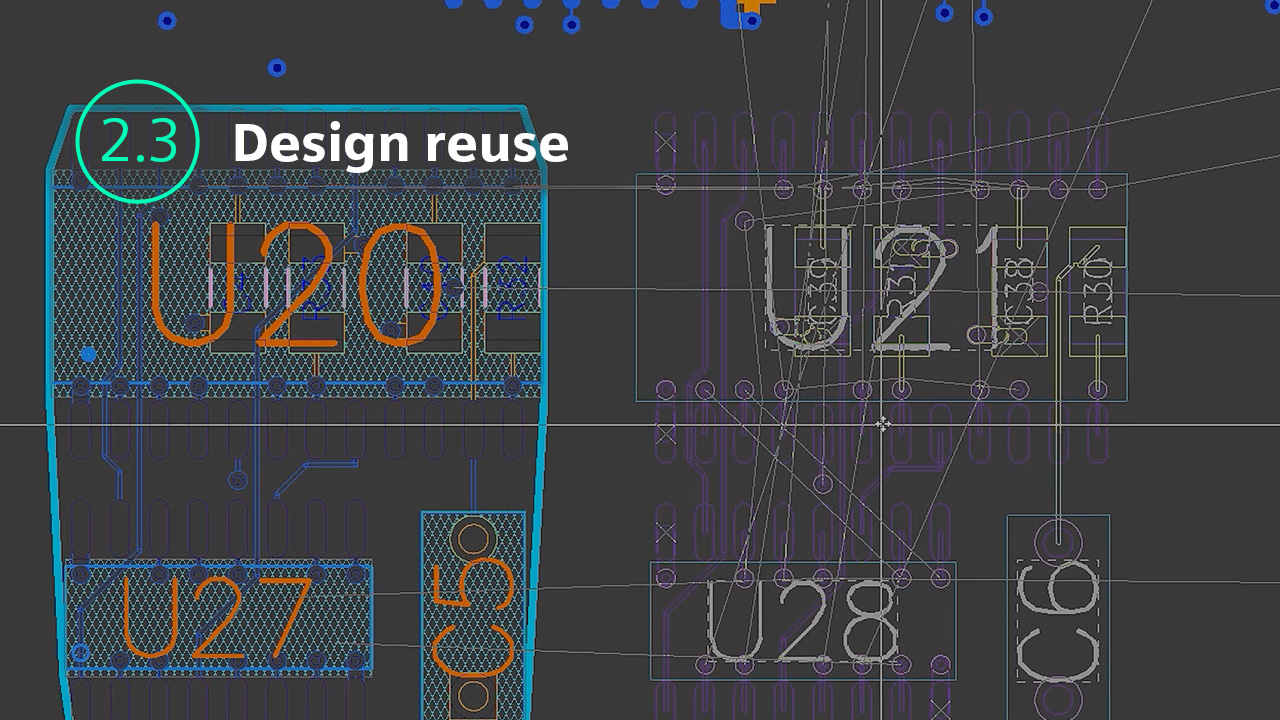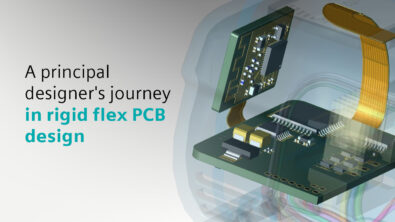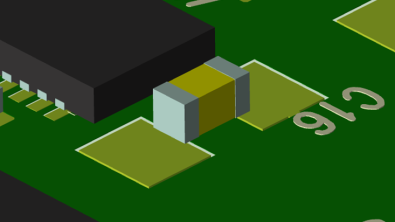PCB design best practices: design reuse

The next best practice in this pillar that I’m going to dive deeper into is design reuse. I can tell you from my experience in the industry that design reuse is typically not inherent to a lot of processes within a company. It’s kind of like automation. A lot of people don’t utilize it, even though their tools may have automations capabilities.
What is design reuse?
PCB design reuse is the reuse of approved, validated, and or known good circuitry or Intellectual Property (IP) across multiple designs and throughout an organization. By implementing reuse, it eliminates unnecessary and or repeated efforts, saves time and reduces or minimizes project risks.
What’s not working?
The typical problem that you have today, when not utilizing design reuse, is that you’re reinventing the wheel over and over every time you start a new project. You’re designing similar electrical circuits, design constraints and PCB layouts, whether it’s a power supply circuit, or any kind of driver circuit, DDR circuitry, an FPGA or a microprocessor circuit, you may have used these same circuits over and over on previously released designs, which means that they are already proven and, in the market, today.
More than likely, you’re redoing the same tasks or efforts of creating/designing the same design content every time. We have been able to achieve a certain level of success within the legacy process or methodologies to date, but those legacy process or methodologies are not optimized and come at a cost and a level of risk. There is a high potential that we are missing out on the ability to design faster, utilize known good/validated content, and further minimize project risks. In the end, it comes down to time-to-market, cost, and minimizing risks.
What are the roadblocks?
One of the roadblocks you’ll have when implementing design reuse is inefficient processes for managing and sharing data. When you want to implement design reuse, not just within your team from design to design, but I’m talking about at an enterprise level, not just a cut and paste approach during the design process, you’re truly creating and utilizing design content that is known to be good and validated. That design content can then be saved, tracked, and version controlled in your library for future implementation on multiple projects throughout the enterprise.
Reuse content is basically managed like an individual component in the library, such as a cap, resistor or integrated circuit (IC), even though its more than just a symbol tied to a land pattern which makes up a component within in the library. A reuse circuitry block or module could potentially contain a multi-sheet schematic with its own proven and validated PCB layout of that specific circuitry already completed, versus just one component that now has to undergo all of the manual repeated steps to achieve your end result.
Another potential roadblock might be that you don’t trust another person’s design or utilizing an unknown author’s particular circuit or PCB layout. What I mean by this is, a lot of times you’ll have engineers that say, “well, I have my own circuit or set of circuits I’m going to use. I know John in that other division used this circuit instead, but I don’t trust that design content. So, I’m going to use my design content instead.” In this example, the engineer or designer could have saved time if he/she would just reuse the design content that was already known to be good, validated, and completed. It comes down to either an individual and or company that simply does not buy into, or see the true value of, implementing reuse.
And the biggest roadblock, I’d say, is that there’s no pressure to change processes or methodologies. They may feel that the return on investment (ROI) is not at an acceptable level for them to change the current formula of success that they currently have in place. They’ll continue to use the same methodology that they’ve been implementing over and over, because the level of success they’ve had to date is acceptable. They feel it’s good enough, but good enough could potentially be only like 65%, at best.
Best practices: design reuse
When we talk about best practices for design reuse, the key is to utilize existing known good circuitry, and proven layouts, so you’re not reinventing the wheel. You want to be able to manage the reuse modules no different than you would manage a single component in your library. And then you want to be able to share that hardware IP, not just from design to design within your business unit or within your local division, but if you’re part of a huge enterprise that’s global, you want to be able to share that IP globally. So that you could take advantage of designing whole systems a lot faster, and with already know good, validated, and proven design content.
The value and ROI you’re going to get from implementing design reuse is you’re using and leveraging known good parts, you’re using known good circuitry and layouts that have already been proven, and you’re going to reduce your design cycle time, which will ultimately reduce costs and lower risk. You’re going to be able to share IP at the enterprise level while being able to reuse these modules and manage them within your library. Reuse is definitely a game changer and has a significant positive ROI if and when you implement it.
How it works: design reuse
In the case of Xpedition, reuse modules can be created and managed similarly to single components in library. This means that not only are reuse modules shared easily, but with this comes the ability to track which reuse modules have been used where, in case the need to modify, or update/revise the reuse modules presents itself, which may happen if a part used in the module is out of stock or has been recently made obsolete.
Reuse is also easily done on the fly locally in a design, by simply copying and pasting circuitry and layouts.
To learn more about design reuse visit our website or watch this video:


